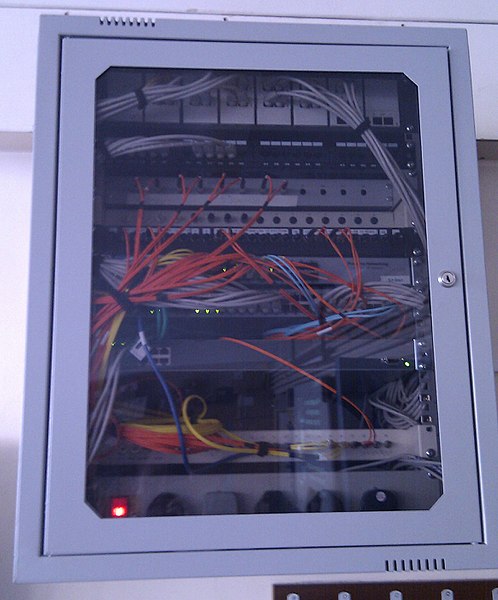Wavelength-division multiplexing
In fiber-optic communications, wavelength-division multiplexing (WDM) is a technology which multiplexes a number of optical carrier signals onto a single optical fiber by using different wavelengths of laser light. This technique enables bidirectional communications over a single strand of fiber as well as multiplication of capacity.
WDM System in rack 19/21''
Series of SFP+ transceivers for 10 Gbit/s WDM communications
WDM multiplexer for DWDM communications
Fiber-optic communication
Fiber-optic communication is a method of transmitting information from one place to another by sending pulses of infrared or visible light through an optical fiber. The light is a form of carrier wave that is modulated to carry information. Fiber is preferred over electrical cabling when high bandwidth, long distance, or immunity to electromagnetic interference is required. This type of communication can transmit voice, video, and telemetry through local area networks or across long distances.
An optical fiber patching cabinet. The yellow cables are single mode fibers; the orange and blue cables are multi-mode fibers: 62.5/125 μm OM1 and 50/125 μm OM3 fibers, respectively.
Stealth Communications fiber crew installing a 432-count dark fiber cable underneath the streets of Midtown Manhattan, New York City
A GBIC module (shown here with its cover removed), is an optical and electrical transceiver, a device combining a transmitter and a receiver in a single housing. The electrical connector is at top right and the optical connectors are at bottom left
A cable reel trailer with conduit that can carry optical fiber







